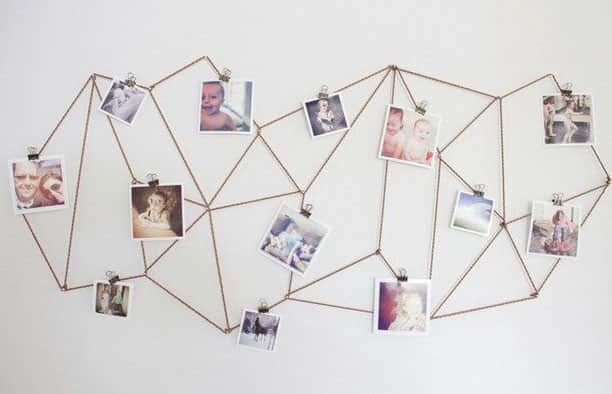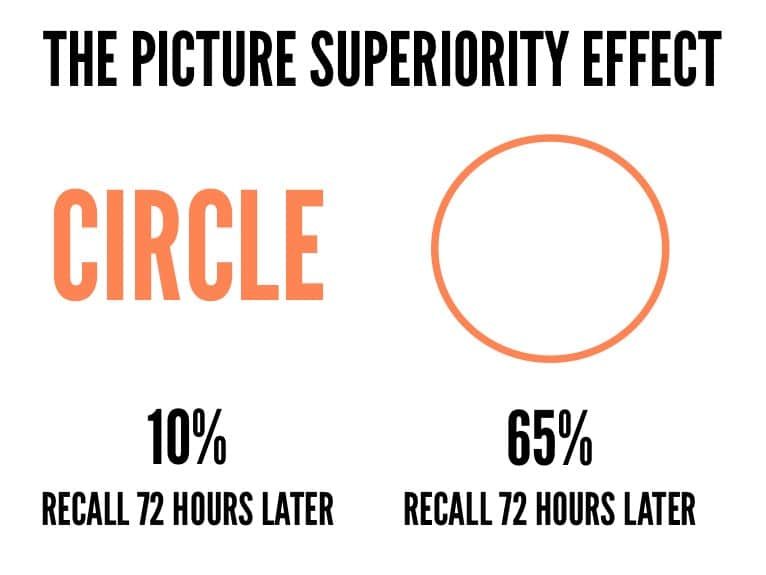Are you after more Social Media Engagement? Use images.
Considering the amount of content uploaded daily, it is no surprise visual images are a user’s default mode of sorting and clearing through text-loaded posts. For portraying a lot more information efficiently, there has been a clear shift from tell to show. As images allow users to devour content more quickly while dramatically improving their likelihood of recall.
There is the timeless saying a picture is worth a 1000 words, and true to tale, research has demonstrated the power of posts inclusive of an image.
-
On Facebook, posts with images attract 53 percent more “Likes,” 104 percent more comments and 84 percent more click-throughs.
-
Adding a photo URL to a tweet can boost retweets by an impressive 35%.
But why are images so effective?
Here are 6 Scientific Reasons why visual images work.
-
Our Brains Are Wired for Visual Processing

Referring to our primitive ancestors, whether identifying danger on an open Savannah Plain or distinguishing edible fruits and leaves from the inedible- we’ve had an evolutionary reliance on sight.
When half of the human brain is devoted directly or indirectly to vision, from day one it is our primary sense for understanding the world around us. With 70% of visual receptors in our eyes, it only takes 150 milliseconds to recognise and symbol and 100 milliseconds to attach a meaning to it. Our brain processes visuals 60,000 times faster than text and retains 80 percent of what we see versus just 20 percent of what we read.
-
We Are Attracted to Colour

Colour is a cue.
Research has shown that people will make a subconscious judgement within 90 seconds of initially viewing an image and of that assessment, between 62% and 90% is based on colour alone. The prudent use of colours contributes to evoking moods and feelings both positive and negative. Also emphasising and de-emphasising areas of importance within an image.
In the 13 milliseconds someone spares to glance at your content- you want them to see what you want them to see, feel what you want them to feel and take action accordingly. The effective use of colour can increase a reader’s attention span and recall by 82%.
If you want something to stand out, create a sense of urgency or even stimulate appetite, choose red. If you want a user to perceive you as trustworthy and reliable, choose blue.
-
We Like Simplicity

A good image is self-explanatory.
Again, it comes back to evolution. We were born to recognise images, only learning to read and write over time. You only have to consider a road sign, and instantaneously we are wired to understand its message in comparison to a wordy warning which we would miss driving past.
Or consider an infographic. An engaging and simple way to break down chunks of information into easily digestible facts in a story telling image.
-
We Respond to Faces

Recognising another human face is important to us, so much so there is a section of the brain devoted to it: the fusiform gyrus. What a word.
There is something about seeing a human face that gets the neurons in our brain excited and highly active when perceiving it. Interestingly, these mentioned neurons are less responsive with less and less of a face shown. A neat circuit between these neurons and another area of the brain known as the Amygdala, is activated when a person sees a facial expression. It plays an important role in the body’s fight-or-flight response.
If you can add in a recognisable face, all the better. It has been shown that single neurons can react to the faces of specific people.
Even just considering the effect of a concluding smiley emoticon that adds a pleased, flirtatious or passive-aggressive tone to a message, chat or email. Research has indicated our brains have started to take these little punctuation faces a step further- actually perceiving them as we would perceive a real face.
So in your next post use the brain’s natural process to grab attention- add in a face.
-
We Recognise Emotion

Emotion, an integral part of human interaction and any marketing strategy.
An emotional image attracts immediate attention, and is actually processed in a prioritised manner. As we respond to faces, we look for emotion in others to influence our own behaviours. Recognising facial expressions is ingrained in us and are universally read across cultures.
Whether you are intentionally conveying emotion or not with your post, users’ will still feel emotion when they view your post. Ideally it is not boredom. Positive content spreads faster and farther than tear-jerking content. In thought, when you consider sharing a post with a friend- who wants to a Debbie Downer? By tapping into a user’s feeling of awe and happiness it increases their likelihood to share the content.
-
We Remember What We See

When we try to remember something, a picture always comes to mind. We evolved for images, not words so it is natural to tie an image to a memory.
Not only do we remember things visually but we remember visuals much better than we do words. Heard of the Pictorial Superiority Effect? Let’s put it into an image (you’ll retain and remember it better).

Based on research, after 3 days, if we read text alone we would only remember 10 percent of the information. Whereas, presented with text along with a relevant image we are 65% more likely to recall this information.
So take advantage of thousands of years of evolution and optimise your presence on Social Media with Visual Images. No, not all of us were blessed with killer graphic design skills but thankfully the Internet is here to help. Check out platforms such as Canva, Piktochart or Pixlr and with the above in mind, create some engaging content with visuals.





